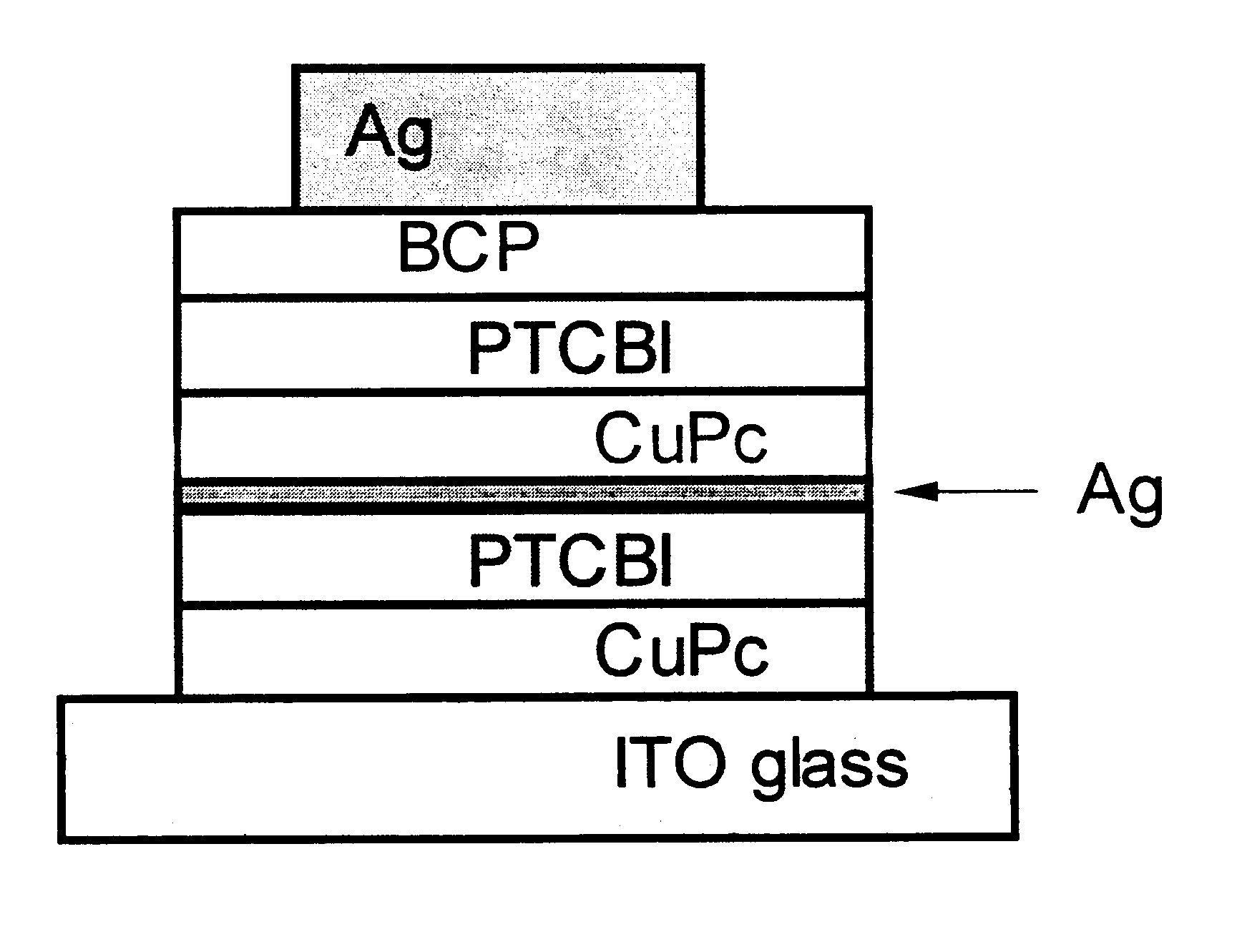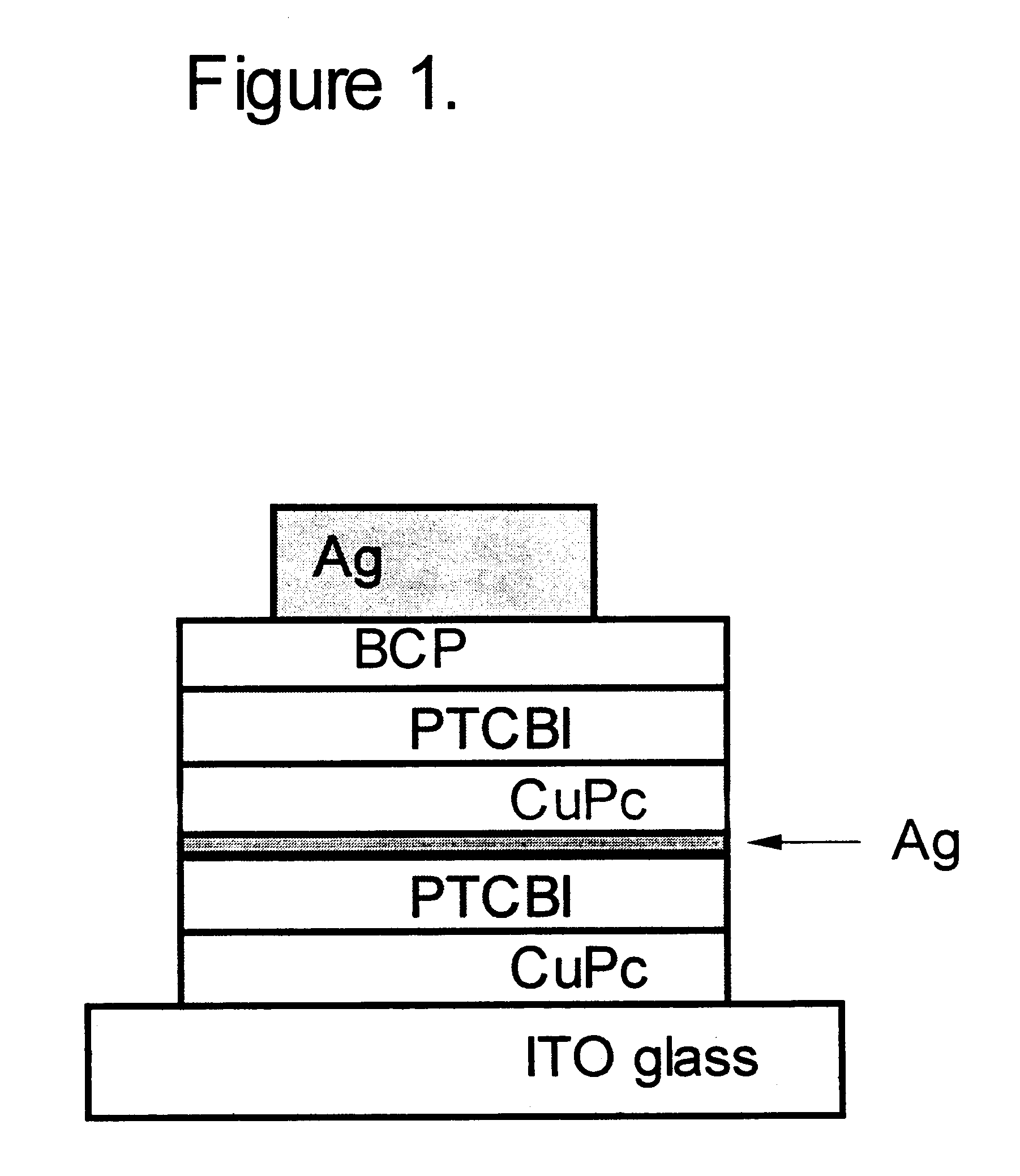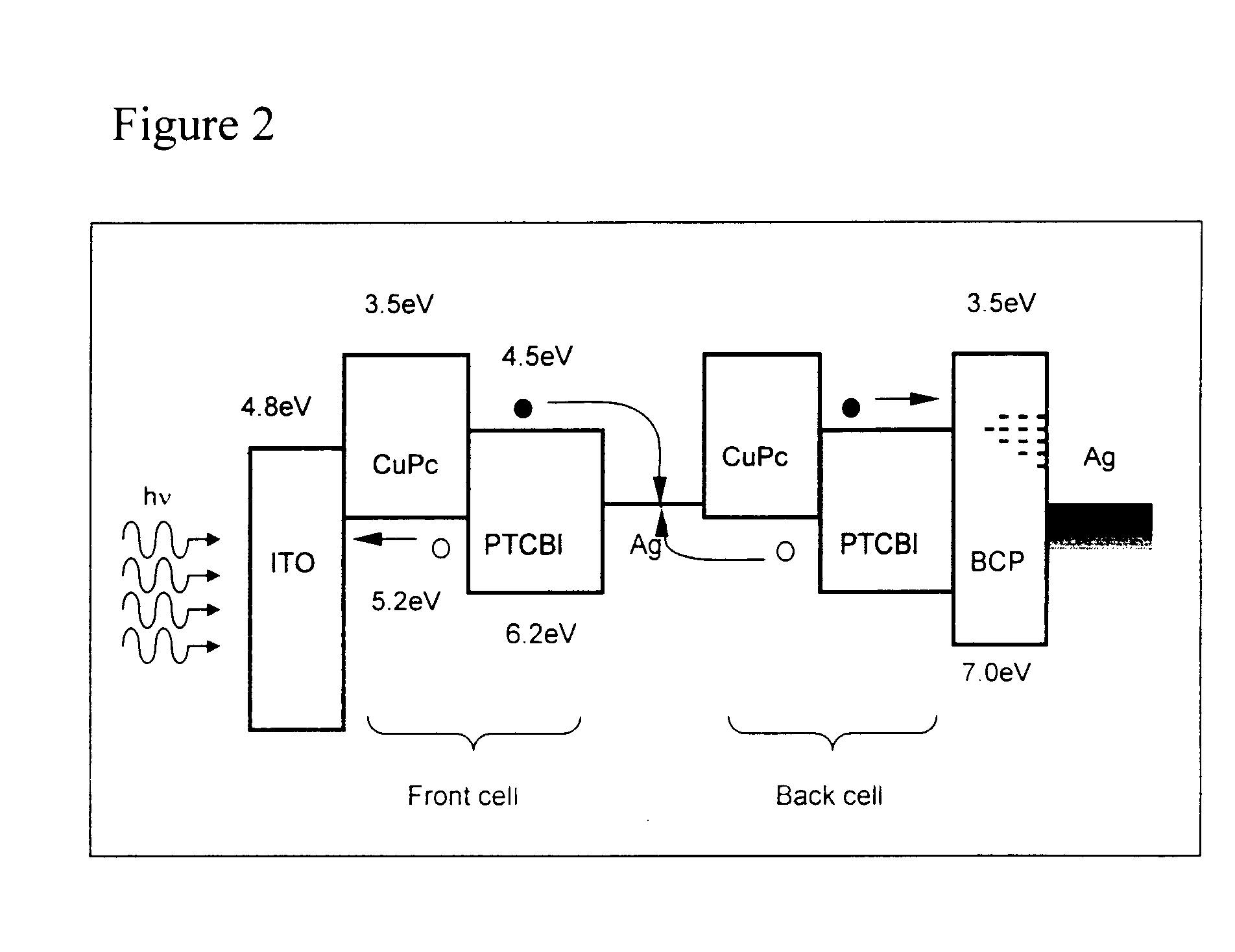Organic photovoltaic devices
a photovoltaic device and organic technology, applied in the direction of organic semiconductor devices, discharge tubes luminescnet screens, instruments, etc., can solve the problems of high cost and difficulty in production, poor stability of high efficiency amorphous silicon devices, and undesirable results of photosensitive optoelectronic devices, etc., to achieve the effect of great improvement efficiency
- Summary
- Abstract
- Description
- Claims
- Application Information
AI Technical Summary
Benefits of technology
Problems solved by technology
Method used
Image
Examples
Embodiment Construction
Exemplary embodiments are fabricated on pre-cleaned ITO glass substrates, spin-coated with a 300 .ANG. thick layer of polyethylenedioxythiophene:poystyrenesulfonate (PEDOT). Spin coating is performed at 4000 rpm for 40 sec, and is followed by 30 min drying at 110.degree. C. for 1 hour at reduced pressure. The organic materials are purified by train sublimation. The PV cells are formed by thermal evaporation (room temperature, 10.sup.-6 Torr, deposition rate of 1.5-2 .ANG. / sec) of organic materials on the ITO / PEDOT glass in the following sequence: donor-acceptor-metal-donor-acceptor-metal. The thickness of individual layers is controlled by use of, for example, a crystal oscillator thickness monitor. Copper phthalocyanine, CuPc, is used as a donor, and perylenetetracarboxylic bis-benzimidazole (PTCBI) as an acceptor. Ag is used for the thin (.about.5-20 .ANG.) layer between the front and the back cells and as a top metal electrode material. The top electrode (of 800 .ANG. thickness) ...
PUM
| Property | Measurement | Unit |
|---|---|---|
| thickness | aaaaa | aaaaa |
| thickness | aaaaa | aaaaa |
| thickness | aaaaa | aaaaa |
Abstract
Description
Claims
Application Information
 Login to View More
Login to View More - R&D
- Intellectual Property
- Life Sciences
- Materials
- Tech Scout
- Unparalleled Data Quality
- Higher Quality Content
- 60% Fewer Hallucinations
Browse by: Latest US Patents, China's latest patents, Technical Efficacy Thesaurus, Application Domain, Technology Topic, Popular Technical Reports.
© 2025 PatSnap. All rights reserved.Legal|Privacy policy|Modern Slavery Act Transparency Statement|Sitemap|About US| Contact US: help@patsnap.com



